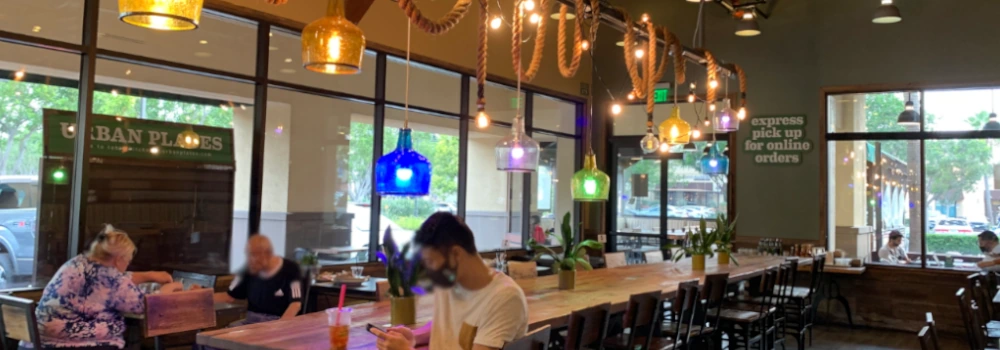
Every successful restaurant has one thing in common: consistency. Guests come back not just for great food, but for knowing exactly what to expect every time. Behind that consistency lies a simple but powerful daily habit—the line check.
Line checks might not sound glamorous, but they are one of the most critical systems for ensuring smooth back-of-house operations, food safety, and quality control. They also play a major role in reducing food waste—a problem that’s bigger than many realize. According to the U.S. Environmental Protection Agency, the food service sector (including restaurants) generated 66 million tons of wasted food in 2019, with about 60 percent of that ending up in landfills (EPA source). Regular line checks help operators identify spoilage and inefficiencies before they become part of that statistic.
In fact, as Chef Eric points out in our latest Restaurant Roadmap Podcast Short, the line check “has to happen—it’s a non-negotiable.”
What Is a Line Check, and Why It Matters
A line check is a structured process used by chefs and managers to verify that every item, ingredient, and station on the cook’s line is ready for service. Before each shift, team members confirm:
- Food quality and freshness
- Correct portioning tools and plateware
- Holding temperatures (both hot and cold)
- Station cleanliness and organization
The goal is simple—catch issues before the guest does. Whether it’s a dried-out fish dip, a missing ladle, or a cooler not holding temp, the line check prevents minor oversights from becoming service disasters.
A Real-World Example from the Restaurant Roadmap Podcast
In our recent YouTube short, “The Importance of Line Checks,” Synergy Consultants’ Danny and Chef Eric walk through an actual line check diagram from one of their client projects. The video explains how a well-designed system can transform what was once a chaotic or inconsistent process into a foolproof routine.
As Danny introduces, “Chef Eric had verbally explained a line check diagram in our full-length podcast, but we wanted to show you exactly how it works.” On-screen, viewers can see an Excel-based line check template built around a pantry station, featuring clear visuals: 12 six-pans across the top, drawers below, and quality check columns for each ingredient.
Chef Eric explains, “After you look at the product, you taste the product, you have a checkmark. You mark off that it’s good to serve for that next meal period.” Beside each item is a thermometer icon, reminding staff to log temperatures on potentially hazardous foods. These checkpoints don’t just ensure guest safety—they confirm refrigeration and hot-holding units are working correctly.
The beauty of the system lies in its simplicity. As Eric notes, “It’s very easy to work through in a very rapid fashion. So if you run a restaurant and your bar manager has to do the morning line check, they can come in and do it without a ton of culinary knowledge.” The document is designed so even non-culinary staff can visually verify quality, temperature, and tools—and give actionable feedback to the team.
Building a Foolproof Tool for Every Team Member
One key insight from the video: great systems are built for the lowest common denominator. In other words, your processes should work even when the most junior or least-experienced person is performing them.
“Put a culinary tool in the hands of someone who isn’t culinarily inclined,” Eric says, “and make sure it’s foolproof and they can get it done according to the standard.”
Danny adds that operators can expand the document to include plateware, utensils, and station-specific setup items—helping each cook or bartender prepare thoroughly before the rush.
Teaching Through Line Checks, Not Just Checking Boxes
A well-run line check is also a training opportunity. As Danny emphasizes, when something’s wrong, the manager shouldn’t just fix it. Instead, “The manager teaches the person working the station how to fix it and why it should be fixed, so in the future they’re not going to make the same mistake.”
This approach turns a simple checklist into an ongoing education system—reinforcing standards and empowering staff to take ownership of their work.
Real-World Benefits: Savings and Safety
Beyond consistency and training, line checks have a measurable impact on profitability. According to the National Restaurant Association, for every dollar a restaurant invests in food-waste reduction, it can realize approximately $8 in cost savings (source). Regular line checks are a key way to achieve that—by catching spoilage, over-portioning, or improper storage before they hit your bottom line.
Need a Copy of the Line Check Template?
As mentioned in the podcast, Synergy Consultants offers the same Excel-based line check document used in the video. It can be customized to fit your kitchen’s layout, stations, and menu.
📩 To request a copy or get hands-on help implementing it for your operation, email info@restaurantroadmap.com.
Watch the Podcast Short
To see the full discussion, visuals, and Chef Eric’s walkthrough, check out the 7-minute Restaurant Roadmap Podcast Short on YouTube:
It’s a great snapshot of how disciplined daily systems boost quality and efficiency in every concept—from quick-service to fine dining.
Final Takeaway
Line checks are essential—they form the foundation of every successful kitchen. When performed consistently and thoughtfully, they prevent surprises, save money, and ensure your guests keep coming back for the same great experience each time.
.png)





.png)





